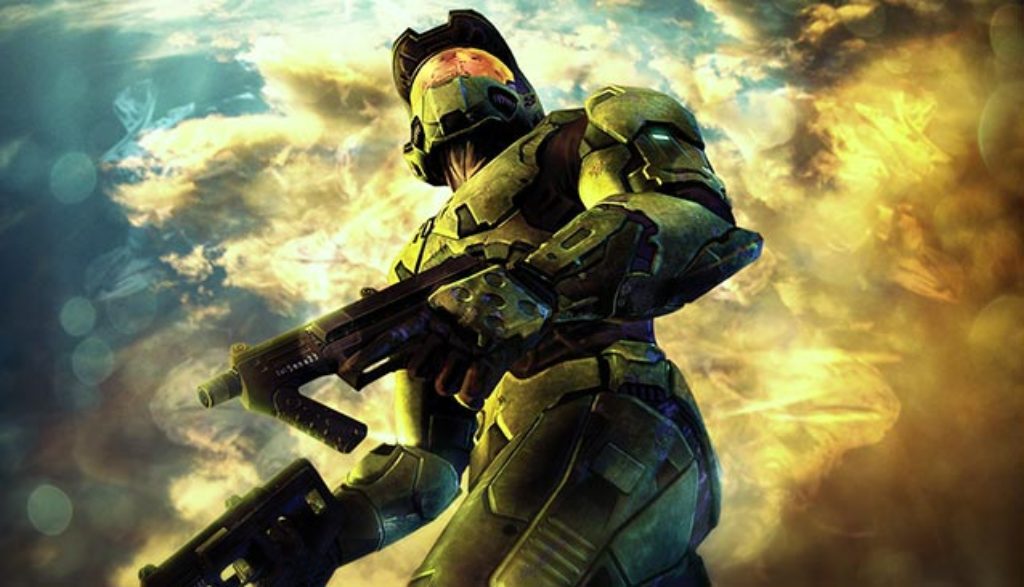
The idea of protecting the planet from hostile alien hordes has been around practically since the inception of video games. Pong had barely captured the public’s imagination before Japanese programmer Toshihiro Nishikado unleashed Space Invaders in 1978.
Now a new invasion is underway. An alien race called the Covenant is attacking Earth in retaliation for mankind’s destruction of the massive ring-shaped construct known as Halo. A genetically engineered, armor-clad warrior named Master Chief answers the call to resist these latest space invaders.
If you haven’t heard of Master Chief yet, you’re among a shrinking minority. Halo 2 is the follow-up to the most successful title since Microsoft’s Xbox platform launched in 2001. And it has created an unprecedented sales maelstrom. In its first three weeks of release last November, the game sold 5 million units globally (with U.S. sales accounting for 3.5 million copies). Halo 2 is nothing short of a marketing phenomenon, especially among its primary audience of male gamers ages 18 to 35. Not surprisingly, a movie is in the works.
Ready, Fire, Aim
Halo 2 is by most experts’ reckoning the reigning king of first-person shooters. While intricate, its story line is little more than an excuse to indiscriminately blow away space-born baddies. And now, in addition to playing the scripted campaign, online technology enables players to war against each other. Three weeks into the game’s release, 900,000 players had already logged a mind-numbing 28 million hours of combat.
Master Chief relies upon a potent arsenal of firepower—from pistols to machine guns to rocket launchers, grenades and a host of alien armaments—to repel a menagerie of Covenant invaders. One of the new features of Halo 2 is the ability to “dual wield” certain weapons. Carrying a weapon in each hand doubles your ability to “go postal.” From time to time, Master Chief also pilots armored vehicles with greater firepower—and greater opportunity for slaughter. Walls quickly become spattered with blue blotches of E.T. blood; dismembered body parts and crumpled carcasses litter the battlefield.
I should note, too, that the game garners an M-rating not only for violence, but for language. The space marines who accompany Master Chief add saltiness to the game, blurting out “colorful” sayings.
Virtual Violence Under the Microscope
Halo 2 is just one title among the latest wave of extremely popular video games under fire for their violent content. And for that reason Halo 2 and Grand Theft Auto: San Andreas (its closest competitor sales-wise) are often referenced in the same breath. Indeed, both games ooze lots of blood. But for the sake of fairness, it should be said that the two games feature different kinds of violence. Halo 2 offers a fantastic, sci-fi variety while San Andreas glories in humans killing humans within familiar urban contexts. (That dichotomy is less evident, though, in Halo 2‘s online play, where you kill characters similar to yours.)
But how much do those differences really matter? Even non-realistic violence has a desensitizing effect on gamers. I felt it as I was reviewing Halo 2. After playing for hours one day, I stopped to watch the news. It was hard to make the transition between the bodies of “dead” aliens to the awful pictures of Asian tsunami victims. My emotions seemed oddly numb to the very real images of death I was seeing.
Several studies indicate that violent video games do have a detrimental effect, especially on young minds. The Indiana School of Medicine reports that teens who play violent games don’t perform as well on self-control and concentration tests, and they had less activity in their frontal lobes (the area of the brain that controls behavior). Similar research at Iowa State University demonstrated that teens who play violent games see the world as a more hostile place, and they’re more likely to get into fights, argue with teachers and get poor grades. After personally playing Halo 2, I find those conclusions more than plausible.
A Flawed Masterpiece
Without a doubt, the Halo 2 design team has crafted a video game masterpiece. Its game play offers an adrenaline rush few, if any, games can equal. But it is flawed. The heart-pumping action that makes Halo 2 so engaging comes at the cost of (potentially) reducing the value of real people in the real world.
Recently, Time magazine video game reviewer Chris Taylor described exactly this dynamic after many hours playing a similarly violent game. He wrote, “I’d play [Quake III], then walk out into the office corridor and realize I was looking at my co-workers as potential targets. I was so used to killing anything that moved.”
Like Taylor, I’m concerned that the ultimate effect of Halo 2 (and its peers, be they fantastical or realistic) is a subtle deadening of our hearts toward the people with whom we live, work and play every day.

After serving as an associate editor at NavPress’ Discipleship Journal and consulting editor for Current Thoughts and Trends, Adam now oversees the editing and publishing of Plugged In’s reviews as the site’s director. He and his wife, Jennifer, have three children. In their free time, the Holzes enjoy playing games, a variety of musical instruments, swimming and … watching movies.